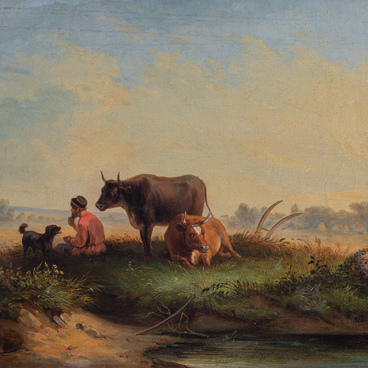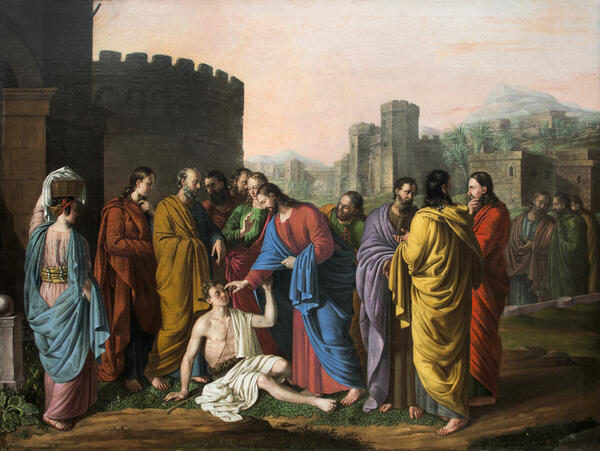“Self-Portrait” by Vasily Pavlovich Khudoyarov belongs to the early academic period in the artist’s work. This small-format canvas is his first and only painted portrait. The artist made this shoulder-length portrait with a three-quarter turn.
Vasily Pavlovich Khudoyarov (1831–1891) was born into the family of the famous Nizhny Tagil craftsman, hereditary lacquerer, iconographer, and painter Pavel Fyodorovich Khudoyarov (1802–1873). He was a serf of the Nizhny Tagil factory and could stay outside his place of residence to work on hire in order to pay a due share to the owner.
In 1855, Vasily Khudoyarov went to St. Petersburg to study. His serf status did not allow him to enter the Imperial Academy of Arts. He began his studies at the school of drawing for non-matriculated students, which was most often referred to as “the school at the Exchange”. This institution was located opposite the Palace Bridge. Training at the school was a necessary preparatory stage for admission to the Academy of Arts. In 1858, Vasily Khudoyarov bought the freedom for himself and his family and could finally realize his dream.
In 1859, Vasily Khudoyarov entered the Academy as a non-matriculated student, whose principal duty was to complete a course of artistic disciplines, while attendance of scientific subjects was not considered mandatory. This form of education may have been chosen because he had no general educational background.
The entrance examination was only held once a year, in August. On the appointed day, applicants presented themselves at the academy with their own drawing supplies. Under supervision, they made drawings from a plaster head in a special classroom. Those who failed this test were not admitted to the Academy of Arts. A positive result required at least three points for the exam.
During his studies at the Imperial Academy, Vasily Khudoyarov received his first silver medal in the fall of 1862. At the examination on October 13, his study from nature was recognized as one of the best. Two months later, the artist repeated his success. His next work was awarded another 2nd degree silver medal.




